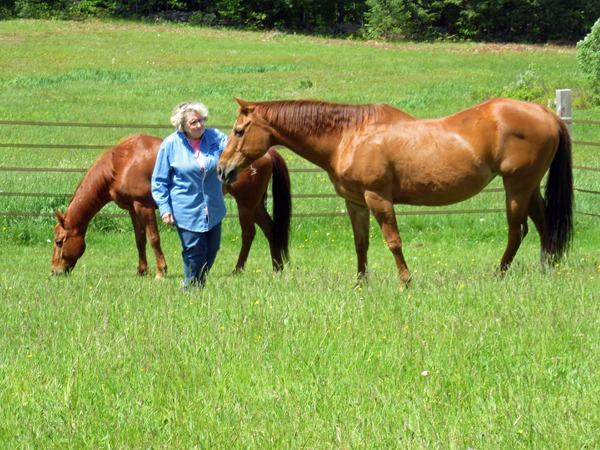There are all sorts of issues related to human abuse of the earth. Most important to me personally and the focus of my mixed media work are issues related to animals and endangered wildlife. Learning about these appalling situations is often very difficult to take.
I didn’t start out thinking I would be a steward of the earth. I was inspired to paint big cats and in order to do so accurately, I felt as an animal artist I need to learn all I can about my subjects. In doing so, I found out more than I anticipated. I visited zoos and rescues for photo shoots, and did research online. I read article after article about all sorts of abuse and neglect, deplorable conditions, roadside exploitation, illegal hunting and about already extinct species/subspecies and the IUCN Red List of Endangered Species.
This was the trigger that resulted in a body of work focused on the plight of endangered great cats, which was to be put on exhibition alongside my ‘beautiful animal’ paintings. There were 60 pieces total, and the program was designed with an educational component for children as well as adults. It reviewed general traits and characteristics of certain species, and it exposed the plight these animals are enduring.
Four of those paintings are included in Environmental Impact II: Edge of Extinction, Roaring Silenced, Last Killed and Losing Ground. These paintings address the animals’ current predicament across the globe including threats to their existence and extinction.
Edge of Extinction was the cornerstone piece in the development of this conceptual series of work surrounding the endangerment and extinction of the seven great cat species of the family Felidae: tiger, lion, jaguar, leopard, snow leopard, cheetah, and cougar/mountain lion.
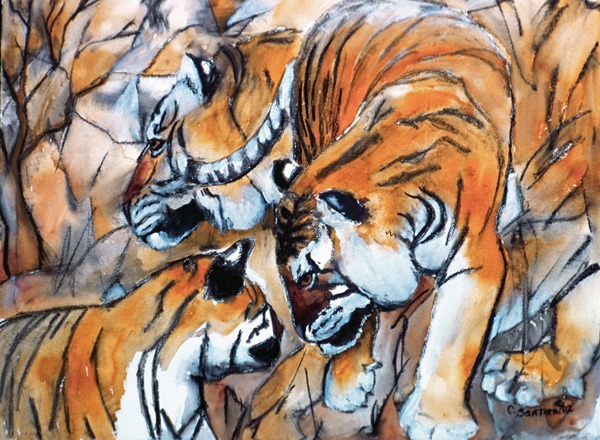
In the painting of smudged charcoal and dirty watercolor paint, the tigers mesh with their surroundings. They are in camouflage. But this masking warns us of their disappearance and imminent extinction. The body of a tiger in the background is fragmented and habitat trees are barren of foliage, symbolic of the cat’s uncertain future, loss of habitat and population decline.
The tiger is one of the best known mammals. Today, sadly, there are more tigers in captivity than exist in the wild. The Critically Endangered Siberian tiger is the largest cat in the world, and only four other subspecies survive.
In Roaring Silenced, one of today’s tigers is disappearing out of the back of the head of a sabretooth cat, a tiger skeleton blemishes the surface and cave wall symbols signify the hunting and killing of these animals and their immortality only on cave walls.
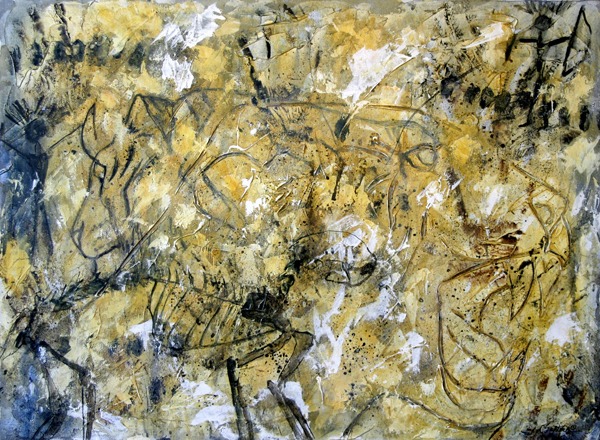
Last Killed is a poignant piece for me. The last Bali tiger was killed in September of 1937. Sadly, it was the only photo of a Balinese tiger ever taken. When you look into the eyes in this painting you can see history and the animal we can no longer enjoy.
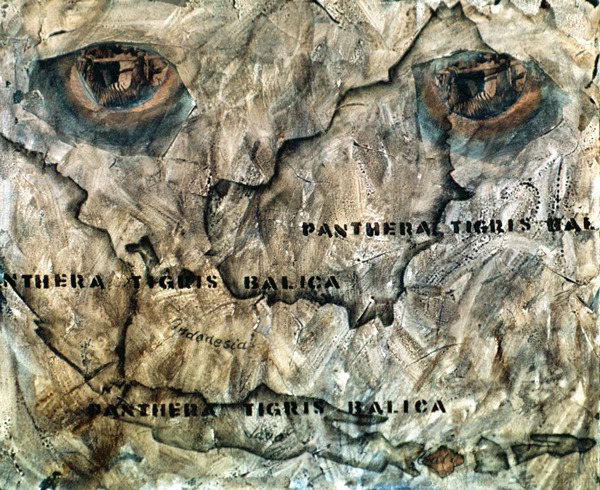
Finally, Losing Ground is about the jaguar, a cat that was once found on US soil, but was hunted to extinction in the late 1940s, before I was even born. Deforestation and fragmentation of forest habitat isolates jaguar populations; humans compete with jaguars for prey and the overhunting forces jaguars to prey on domestic animals. Jaguars are frequently shot on sight, despite protective legislation, and it fuels the vicious cycle of human-wildlife conflict.
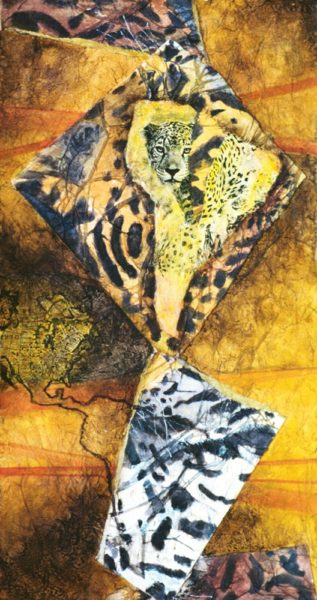
I am a small part of the whole in stewardship of the earth. My hope is that through my art I can relay the message to protect what we have and inspire change. I/we all need to speak for the animals that cannot speak for themselves and those that are already gone from the earth.
Environmental Impact is a monumental exhibit, and I am one of its messengers, hoping to bring environmental awareness to many. My goal is to inspire action and good stewardship of our earth and its creatures, to motivate my viewers to accept responsibility for the deterioration of our planet, and to incite change.
As an artist I want my paintings to connect people with wildlife policies and issues, so that they look deeper, ask questions and take action. My art visualizes what is invisible.
No one person created the state our earth is in, so no one person can fix what has been done. It is a group effort. And some things will not change. For example, no one can bring back extinct species of wildlife. But if exhibition viewers accept the challenge, they will protect those that still exist and keep them safe. They themselves can promote and become good stewards. The protection of our planet is everyone’s responsibility. Everyone needs to do their part if we are to succeed.
I support the rescue of unwanted, neglected and abandoned horses, dogs and cats. Signing petitions and writing to government officials with direct contact to bills and laws in congress to oppose things like the deadly helicopter round-ups of mustangs, the killing for poaching of elephant tusks and killing of tigers for the trade in tiger parts is something I do, we all can do. On the Asian market, did you know a dead tiger with all its parts is valued at $70,000?
Chief Dan George said it best: “If you talk to the animals they will talk with you and you will know each other. If you do not talk to them you will not know them, and what you do not know you will fear. What one fears one destroys.”
Carol Santora is a multi-disciplinary artist, best known for her contemporary expressionist and soulful equine and animal paintings. She has always loved animals and her fascination with the grace and beauty of horses has greatly influenced her artistic path.
”The process of portraying horses and other animals continues to evolve in my work. My art retains a sense of experimentation, and working in a series I focus on a particular way the application of paint reveals the desired outcome. A variation of the process motivates the next series of paintings. My art combines abstract and realistic elements. I filter out superfluous details and portray animals in their clear essence – their spirits and souls, their energy, movement and physical presence.”
Santora works on textured surfaces, pours and drips paint building up the images with several layers, often merging the animal with the background. The animal’s image emerges, simplified, or seemingly left unfinished, to allow the viewer room for personal interpretation. By reducing her paintings to their most essential elements, she says everything she needs to say – render what has truly impassioned her.
She has captured the attention of international collectors, both private and corporate, and among her many awards and achievements, Santora has earned associate status in the Society of Animal Artists, and signature status in the Pastel Society of America. Her work has been shown in museums and galleries across the U.S. and in Europe. She is represented by several galleries and 4 of her paintings are part of the traveling museum show ‘Environmental Impact’ curated by David J Wagner, LLC, 2013 – 2022.
She maintains a working studio at her Lyman, ME, residence where she lives on a 7-acre farm with her husband David, their three quarter horse mares, Ruby, Mimi & Trixie, and their two dogs Biscuit & Peaches.
Work by Carol Santora is Featured in ENVIRONMENTAL IMPACT II, Produced by David J. Wagner, L.L.C., David J. Wagner, Ph.D. Curator/Tour Director
The views and opinions expressed through the MAHB Website are those of the contributing authors and do not necessarily reflect an official position of the MAHB. The MAHB aims to share a range of perspectives and welcomes the discussions that they prompt.
